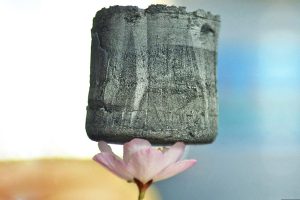Researchers at Amirkabir University of Technology have developed a graphene aerogel–based composite that significantly enhances the lifespan and capacity of lead–acid batteries, a breakthrough that could pave the way for upgrading the current generation of industrial batteries without requiring changes to production lines.
According to the Report, This innovation focuses on the use of three-dimensional nitrogen-doped graphene materials, which improve the conductivity and stability of electrodes, thereby enhancing battery performance under harsh operating conditions. Initial tests indicate that prototypes built using this technology exhibit greater durability and higher efficiency compared to conventional batteries.
According to the researchers, this technology could not only bring domestically produced batteries closer to global quality standards but also create opportunities for Iran’s entry into the export market for advanced batteries. The project, carried out in collaboration with the private sector, marks an important step toward localizing modern energy storage technologies.
A study centered on the use of graphene-based composites in lead–acid batteries has opened a new horizon for extending their service life and energy storage capacity. In this project, graphene aerogel was employed as an additive material to significantly enhance electrode performance.
Dr. Arash Ghazitabar, Ph.D. in Materials Engineering from Amirkabir University of Technology and Assistant Professor at the Institute for Color Science and Technology, explained that Iran’s battery industry is largely focused on lead–acid battery production, and the adoption of emerging technologies such as graphene aerogels can improve their quality and efficiency without the need for major modifications to existing manufacturing lines. According to him, incorporating three-dimensional carbon materials into the battery structure increases the electrical conductivity, stability, and lifetime of the cells.
In this project, nitrogen-doped graphene aerogel, combined with zinc oxide nanoparticles, was synthesized using a simple and cost-effective chemical reduction method. The resulting material exhibits a meso–macro porous structure with a high specific surface area, maximizing electrolyte permeability. Laboratory-scale battery prototypes fabricated with this technology demonstrated longer cycle life and higher capacity compared to conventional models.
Dr. Ghazitabar emphasized that the use of graphene aerogels could revolutionize the domestic battery industry, and localizing their production would enable both technology export and product commercialization. He noted that major companies in China and the United States already utilize carbon-enhanced batteries, and now Iran, through the production of advanced 3D graphene-based models, can also establish a competitive position in this market.
This project is currently being implemented in collaboration with the private sector at Platin Iran Company, with the goal of producing high–energy-density batteries featuring extended lifespan and applicability in industrial and transportation sectors.


